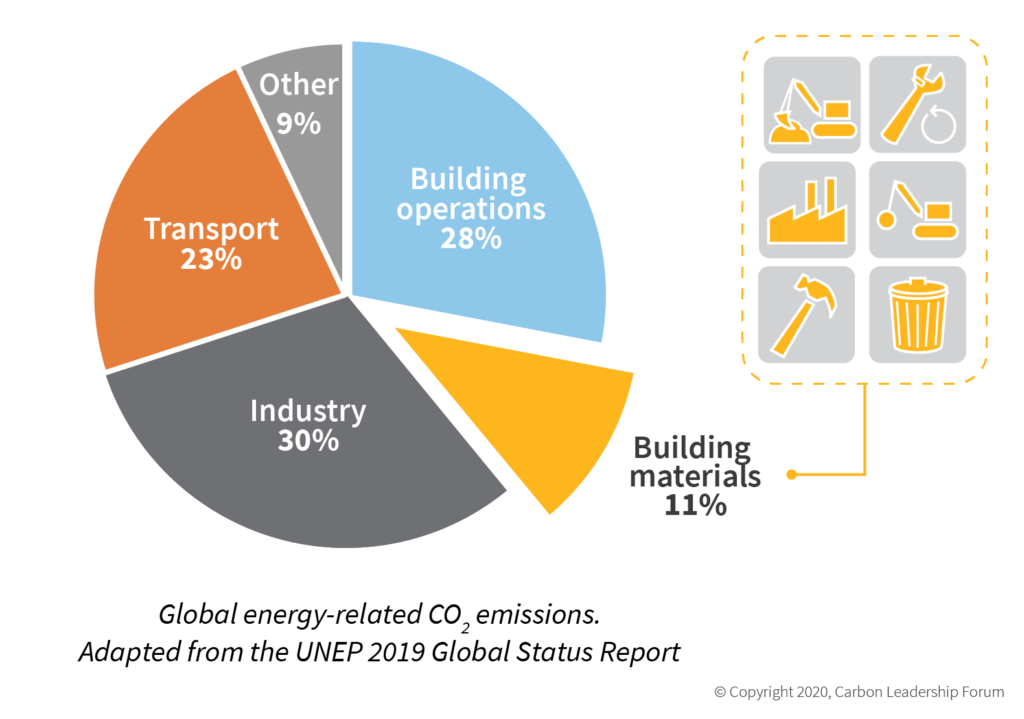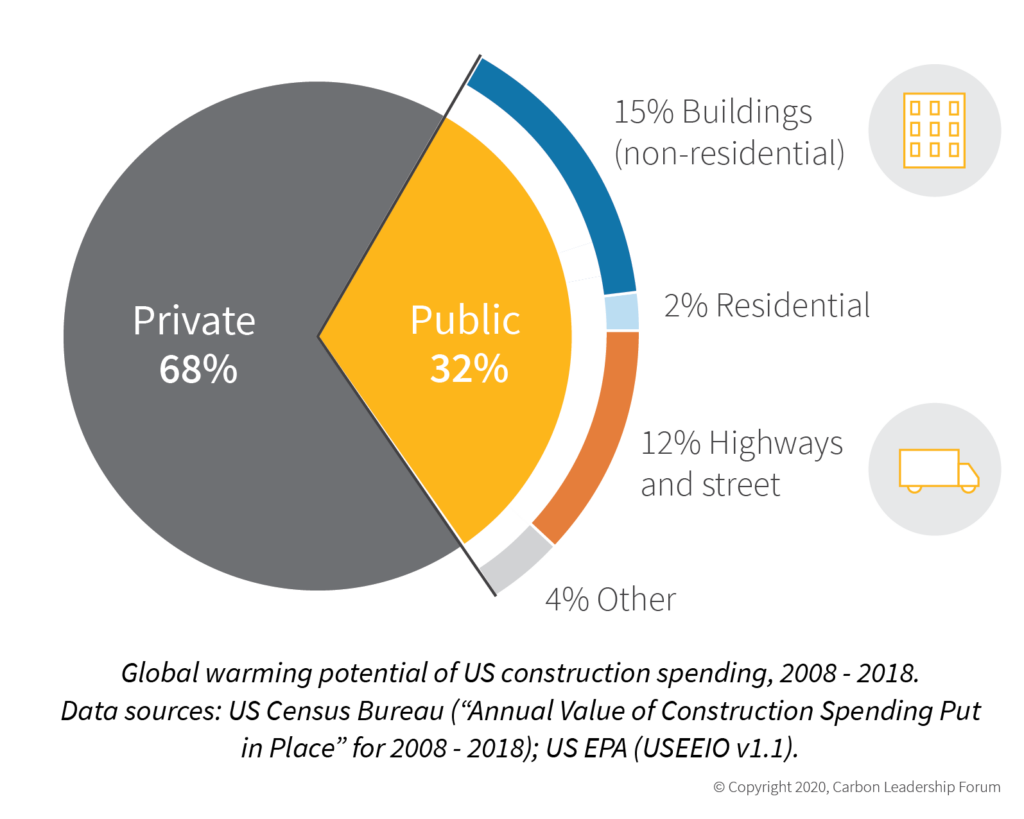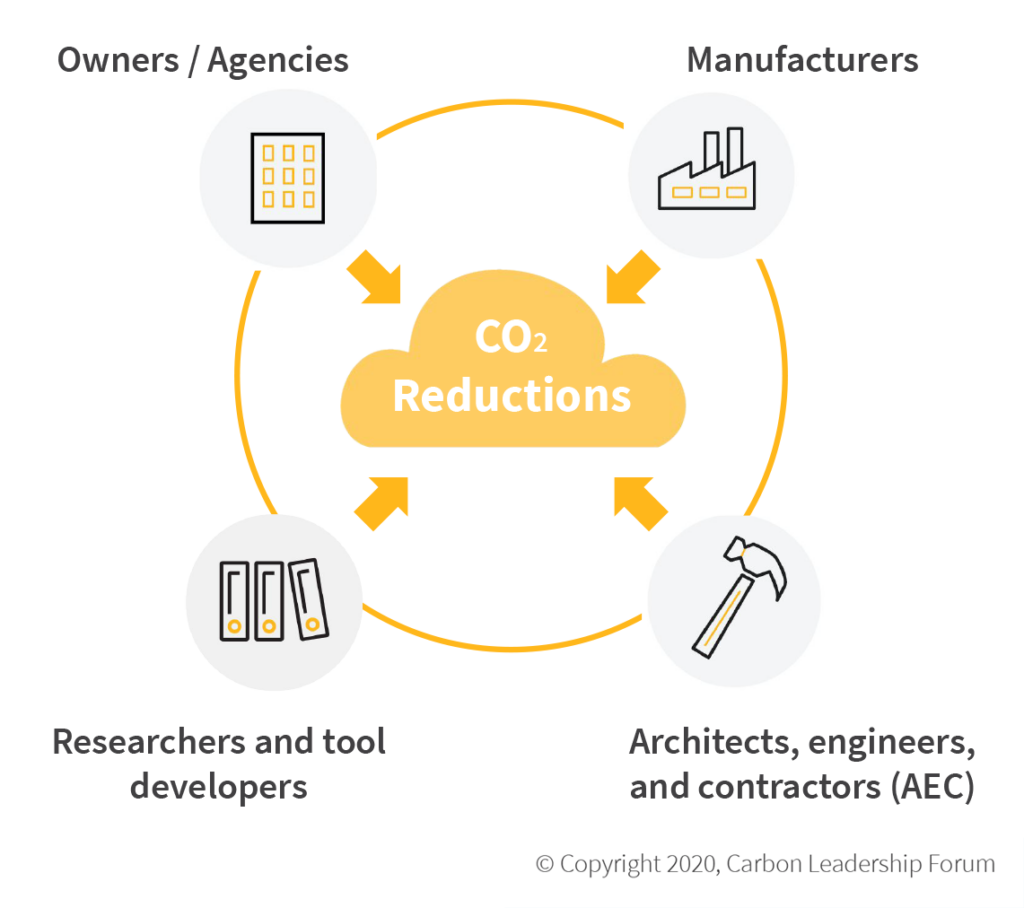This factsheet includes an overview and key elements of Buy Clean procurement policy, its impact in reducing embodied carbon, and provides a snapshot of the status of Buy Clean policies in the U.S.
Buy Clean is a procurement policy approach that aims to fill a current gap in climate policy by incorporating low-carbon construction purchasing requirements that address the greenhouse gas emissions from construction materials into government purchasing.
Buy Clean policies use a combination of disclosure, incentives, and standards to leverage the significant purchasing power of public agencies to encourage a shift toward lower-carbon options in the broader construction materials market. Buy Clean is an approach that can be applied at the federal, state, or local level and can also be used by private building owners.
Version: December 17, 2020
Embodied carbon is a big piece of global emissions
Embodied carbon refers to the greenhouse gas emissions arising from the manufacturing, transportation, installation, maintenance, and disposal of building materials used in the construction of buildings, roads, and other infrastructure.
Building sector emissions are responsible for nearly 40% of energy-related global greenhouse gas emissions, with at least 11% resulting from the production of building materials. This number is even larger when considering non-energy-related emissions from the manufacturing of cement, steel, and other construction materials (see Figure 1).

Figure 1. Global energy-related carbon emissions. Adapted from UNEP 2019 Global Status Report.
Embodied carbon is a gap in current climate policy
The majority of a product’s embodied carbon footprint is generated across its supply chain, which may be spread across the globe. Current climate policy efforts do not hold anyone accountable for reducing these emissions because they only focus on locally generated emissions. This enables one location to outsource its emissions to another, creating a ‘carbon loophole’. A 2019 report (by KGM & Associates and Global Efficiency Intelligence) found that approximately 25% of global emissions are embodied in traded goods that pass through this loophole.
Procurement policies leverage money that is already being spent to fill this policy gap
Procurement policies are widely recognized as a key strategic lever for driving innovation and increasing the sustainability of the private and public sectors across the globe (UNEP; KGM & Associates and Global Efficiency Intelligence). Buy Clean is a procurement policy that addresses the current climate policy gap by accounting for a product’s emissions throughout its supply chain, regardless of location.
Procurement policies leverage the large purchasing power of governments – which typically make up 12-30% of a country’s gross domestic product (UNEP) – to standardize embodied carbon emissions reporting and reward companies doing their part to reduce emissions. This has the opportunity to impact a significant amount of emissions:
- 32% of the embodied carbon of construction in the United States between 2008-2018 was attributed to public projects, resulting in approximately 153 million metric tonnes of CO2e per year in emissions (see Figure 2).
- Public projects are historically responsible for 46% of US cement use – one of the largest opportunities for carbon reductions (PCA).

Figure 2. Relative contributions of the global warming potential of US construction for private and public projects). Data sources: US Census Bureau (“Annual Value of Construction Spending Put in Place” for 2008 – 2018); US EPA (USEEIO v1.1 data).



